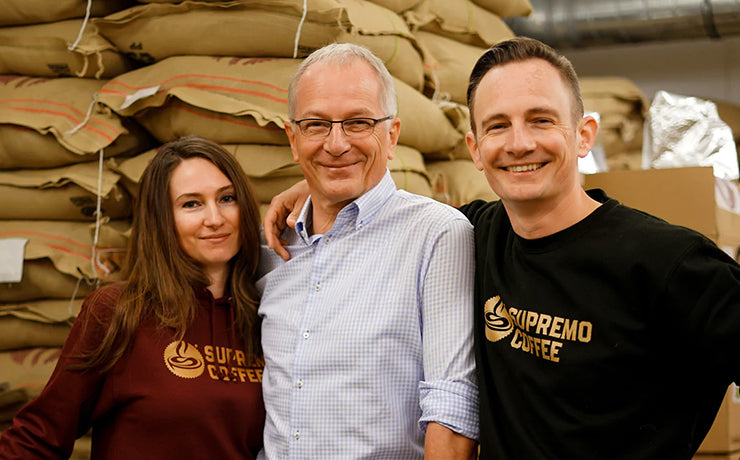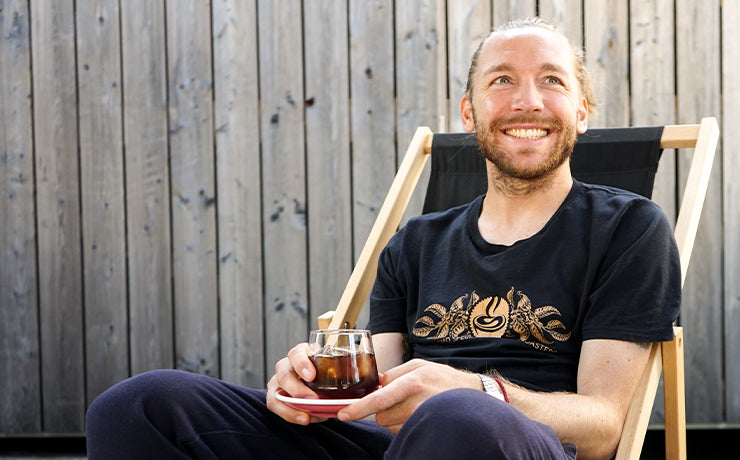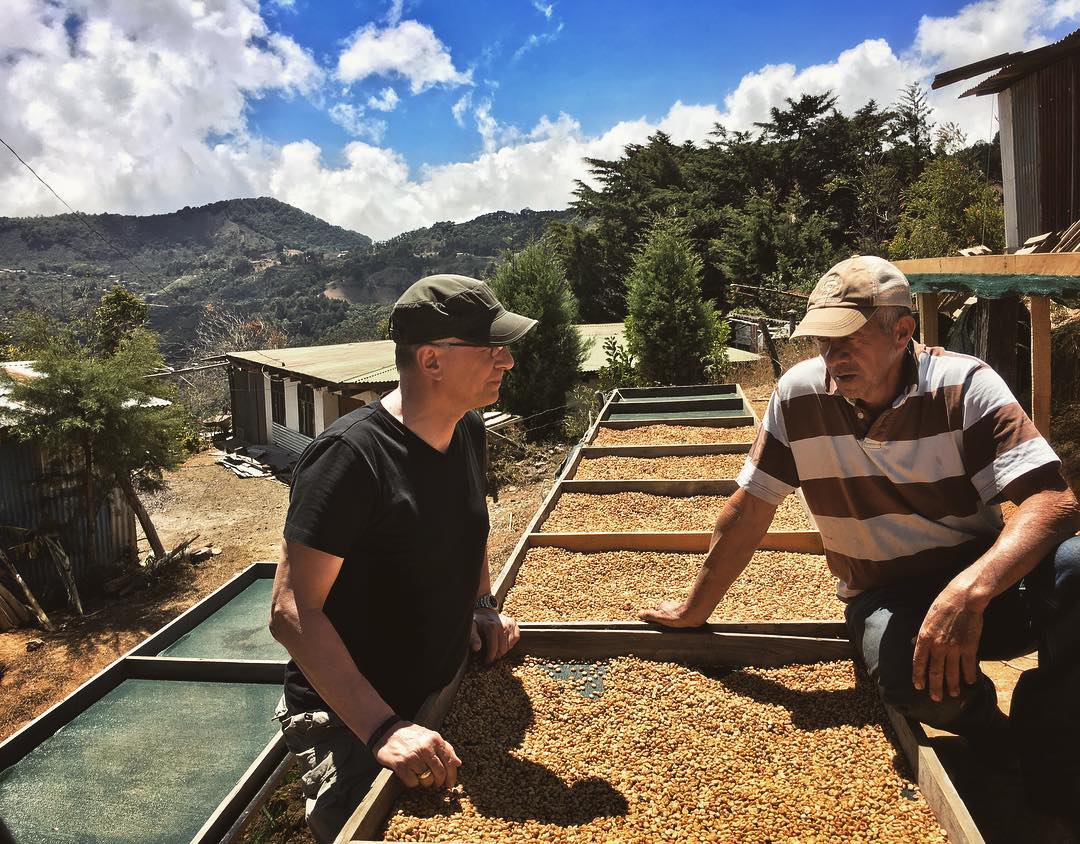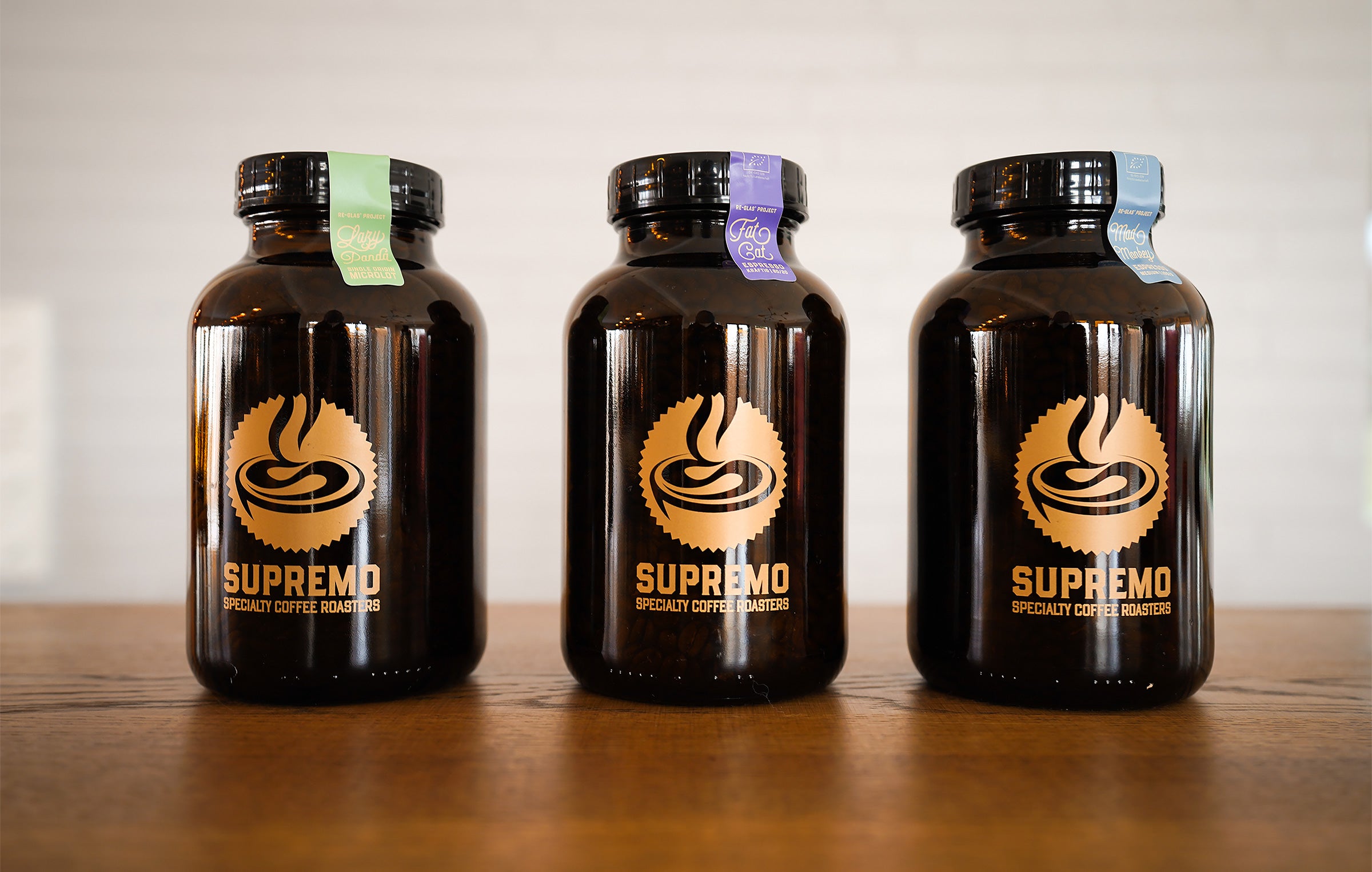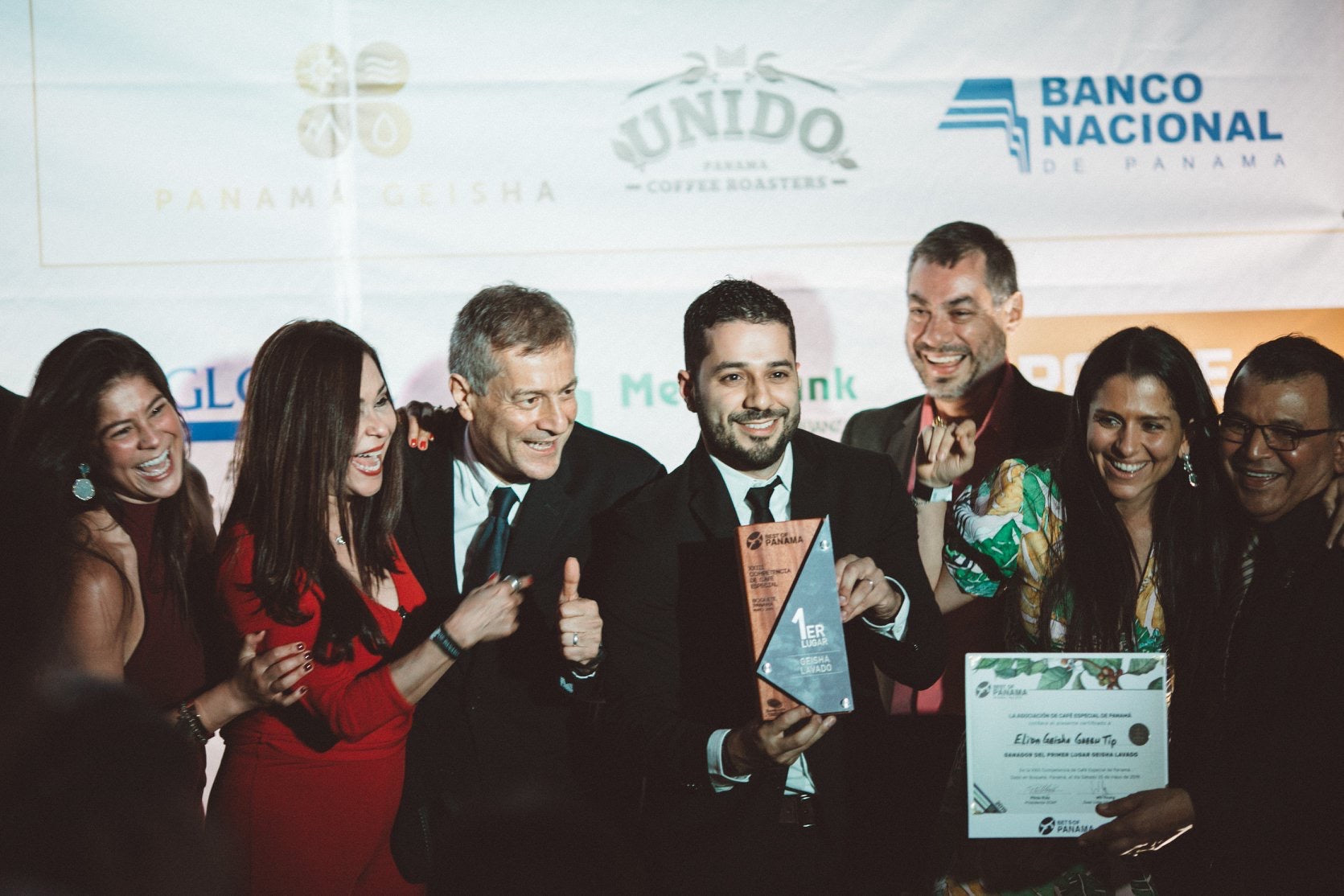
"Queen of Bean" | The most exclusive coffees on the planet
Raphael, is there THE best coffee in the world?
Viewed neutrally, the question of the "best" coffee is and remains, of course, a question of personal taste. However, experts and gourmets usually agree on which coffee is currently the most exclusive or spectacular. This can be determined by a few factors, such as the size of the globally available quantity, the effort required for cultivation and expansion, and of course, most importantly, a characteristic and unusual flavor profile. Let's take a little trip through time and look at the highlights of the most expensive coffees.
JAMAICA BLUE MOUNTAIN
For decades, the exclusive "Jamaica Blue Mountain" was considered the ultimate in coffee. This top-quality coffee, planted in the Blue Mountains of Jamaica, began as early as 1728. The packaging of the green coffee in small wooden barrels alone made it stand out from the crowd of jute sacks, just like a noble barrel-aged rum. JBM remained the undisputed champion of the most expensive and exclusive green coffees for a long time, with its characteristic and very well-balanced taste profile. Even today it is considered a rarity and is exported mainly to Japan. It was only shortly before the end of the last millennium, when a small group of international coffee experts came together with the vision of finding the best coffees in Brazil and connecting roasters and coffee farmers, that the end of this era slowly began to show.
CUP OF EXCELLENCE
As part of this non-profit project, the first Cup of Excellence was held in Brazil in 1999. It revolutionized the coffee market with its new transparent approach and is still considered one of the toughest competitions for green coffees. Year after year, with the help of a network of international coffee experts, the best coffees of the respective harvest year are found at the CoE and then auctioned off online. Currently, the ACE (Alliance For Coffee Excellence) organizes the CoE in 13 different coffee-growing countries, in addition to other small projects such as the current Yemen Project.
CoE winning coffees are top tasting and the project is one of, if not THE most significant game changer in the coffee industry of our time. CoE winning coffees fetch record prices at auction because of the rigorously selected quality in taste, transparency and the highly limited lot sizes.
KOPI LUWAK
In 2007, the movie "The Bucket list" ("The best comes at the end") with Morgan Freeman and Jack Nicholson provided an entertaining animal interlude in the list of the most expensive and crazy coffees in the world. Kopi Luwak became the most expensive and absolutely polarizing coffee on the planet simply because of its wacky backstory involving selection and processing by the civet cat. Initially collected "wild" on the jungle floor, there were supposedly only about 200 kg of this rare coffee worldwide. Taste-wise quite reasonable for coffee from the region, but the attraction of the story was driving factor. As demand increased globally, so did the criminal energy and the resulting caging of the little animals, bringing the shooting star to an abrupt end.
GEISHA ARABICA | PART 1
THE ORIGINS AND HACIENDA LA ESMERALDA
The origins of this unique variety, it is said, go back to British colonial times, just like JBM. In 1936, Captain Richard Whalley, then consul of the Bench Maji region in Abyssinia, was commissioned by the Director of Agriculture in Kenya to collect 10 pounds of coffee seeds from the Mount Gesha region for a species catalog of wild Ethiopian Arabica varieties. The goal here was to investigate the commercial viability of the species for cultivation in other colonies. Later, the Geisha coffee seeds made their way through a network of different gene banks and coffee research institutions. Some of these seeds eventually ended up in Costa Rica at the Tropical Agricultural Research and Higher Education Center, or CATIE. How did these seeds get to the Hacienda?
In 1967, Swedish-American banker Rudolph A. Peterson bought the land of what is now Hacienda Esmeralda to spend his retirement. In the 1970s, his son Price gave up his teaching position at the university to move to and take over the hacienda with his wife and two children. At that time, the Geisha variety was known exclusively for its resistance to leaf rust coffee disease, this reason also brought it to Hacienda La Esmeralda.
It was not until the late 1990s that coffee began to be cultivated in Panama and sold on a region- and farm-specific basis. By chance, son Daniel discovered the absolutely exceptional flavor profile of the Geisha varietal. A coffee with an unprecedented fruitiness. In 2004, the Peterson's presented the coffee at the "Best of Panama" coffee event.Since then, Geisha and Hacienda La Esmeralda have become an integral part of the specialty coffee world.
GEISHA ARABICA | PART 2
ELIDA GEISHA BREAKS ALL RECORDS
Before we look at the moment the Lamastus family broke the sound barrier and ushered in a new era of coffee prices, a brief portrait of the family. The Lamastus Family Estates is an association of three farms founded in 1918 by Robert Lamastus: Elida Estate, El Burro Estate, Luito Estate. Each of the farms is located in a different region of the highlands of Panama and accordingly has its own microclimate and terroir.
Approximately half of Elida Estates is located within Baru National Park, a protected ecological reserve that is also a sanctuary for exotic flora and fauna. The Baru volcano is one of the highest volcanoes in Central America and with its 3475 m height and 14.000 ha area it encloses seven different climatic zones. The Elida can take advantage of all the resulting benefits, such as cultivation altitudes of 1650 m to 2000 m, and make full use of them.
It is cultivated here under really grandiose conditions. Besides the cultivation altitude, rich volcanic soil, unique microclimate with dense fog during the dry months and the rather low temperatures, which slow down the ripening and are incredibly important for the development of the beans. Not to be neglected is the naturally cloudy rainforest that surrounds the coffee trees. All of these factors lead to this excellent quality of coffee plants.
THE END OF THE LINE?
The Lamastus family made their debut in the Best of Panama coffee competition in 2002 with a washed Typica that also won them 1st place. In the following years, they were able to land a few 2nd and 3rd places, but it wasn't until 2016 that they were able to build on their 2002 success with a washed Geisha.
Then at the 2018 competition, their Geisha coffee placed 1st in their respective categories with Geisha Washed and Geisha Natural. In the subsequent auction, they cracked the incredible $800 per pound mark, setting an unprecedented record for green coffee worldwide. For a year, the coffee world discussed this dizzying coffee price - from pure enthusiasm to sheer horror, every form of reaction was present. Was this still in any way proportionate? Has the end of the line been reached? Could this still be topped in any way? The coffee is indisputably extraordinary, and to be honest, I asked myself these questions as well.
While the whole world was still wildly debating, the Lamastus family was working with united strength and full meticulousness on the harvest that would finally lift them to the Olympus of the coffee world. For the 2019 competition, they continued to develop and perfect their cultivation methods.
The day of the announcement of who won in which category at the Best of Panama 2019 arrived and with it there were once again two first places for the Lamastus family. At the auction that followed, the price for their coffees shot up to unprecedented heights, landing at an incredible $1,029.00 per lb (pound). That was over $1000 for just under 400 grams of unroasted coffee. What makes the whole situation even more surreal is the fact that the price on the exchange for a pound of Arabica was less than a dollar at the time.
Let's take a leap forward to the here and now. You can probably imagine the gleam in our eyes and the grin when we received a package from Wilford Lamastus with a selection of this year's lots from their farms. Even as we prepared the samples, an intense aroma of bergamot and jasmine flooded our cupping lab. The tasting panel then experienced a fireworks display of the senses, far from the normal coffee flavor profile with descriptions more reminiscent of a wine or champagne tasting than coffee. Our favorite - a Geisha of the processing "Natural Anaerobic Slow Dry Dowsed"- we bought without further ado and received vacuum-packed in small boxes. In one word: a true fruit explosion!
Last week came the moment of truth, should the Lamastus family make it to the podium again? Can their record be broken again? We can already answer the first part today, they did it again, their washed Geisha got silver. Whether this year will also break the world record in terms of price remains to be seen.
MORE THAN AN ANIMAL STORY
To get into the ranks of the most exclusive and best coffees and to stay there, it takes more than just an "animal" good story, the coffee must also stand out in the sea of excellent coffees with its unique aroma and continuously deliver top performance. Currently, the throne seems to be firmly in the hands of the Arabica variety Geisha or Gesha and the country of Panama.But what will the future bring? Currently, there is a lot going on globally, a lot of research and discoveries are being made. Especially in Ethiopia and Yemen, the traditional home regions of the Coffea plant, there are terrific discoveries ... but that's another story.
Our Geisha is roasted at Supremo on fixed days, so that you can enjoy the coffee then top fresh and optimally roasted. If you want to try the coffee, you can find here:

